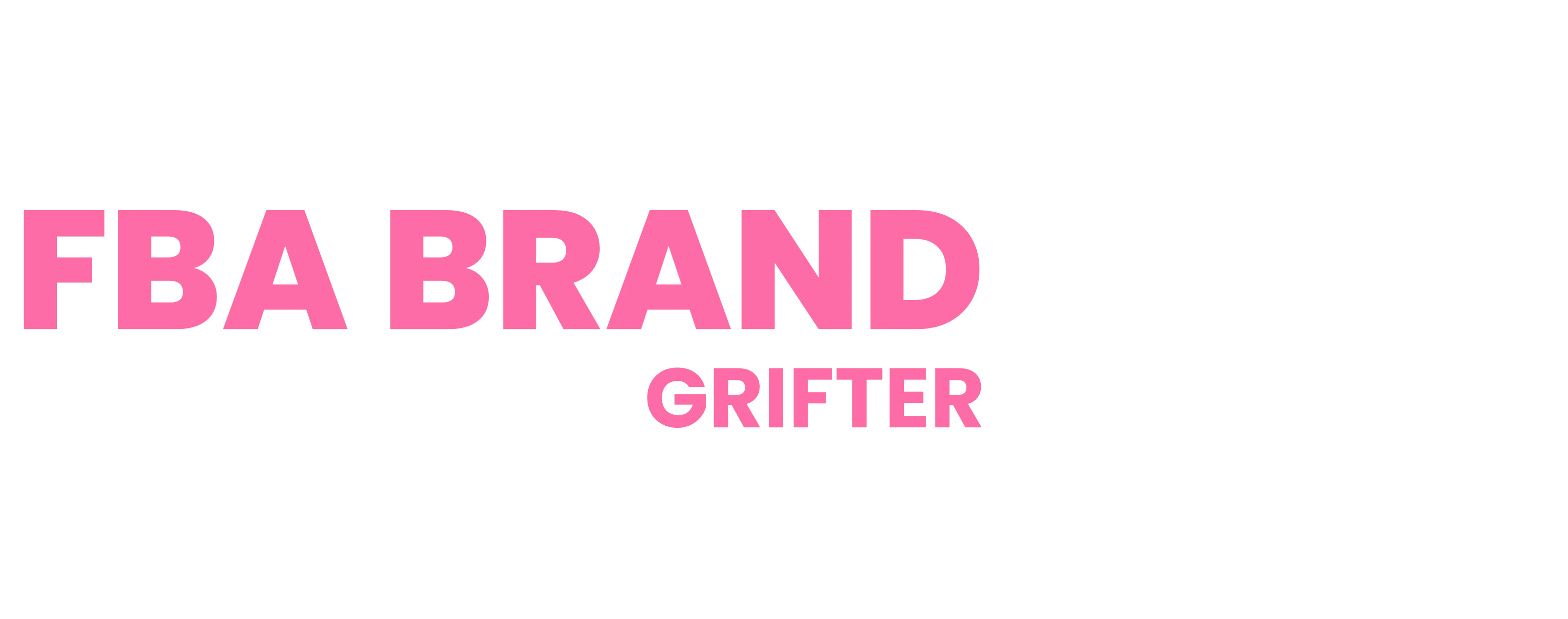In the last few years, Amazon FBA has been promoted as the “ultimate” get-rich-quick opportunity. Social media is packed with gurus who promise that, by following their course, you can quit your 9-to-5 job, live a "laptop lifestyle," and hit six figures in just a few months. One of these personalities is Darren, who pitches Amazon FBA as an easy path to wealth. But, as the old saying goes, "If it sounds too good to be true, it probably is.” Let’s unpack what many FBA gurus, including Darren, conveniently leave out and break down the reality for those interested in Amazon selling.
The Allure of Amazon FBA and the Promises Made
Darren and other FBA gurus are great at painting a perfect picture of the Amazon FBA model. They often claim that you don’t need much experience or investment to succeed—just leverage Amazon’s vast network and you’re all set. They flaunt revenue figures, luxurious vacations, and fancy cars as “proof” of their success, banking on these stories to sell their courses or mentorship programs.
What they don’t tell you? Revenue is not the same as profit. Maintaining a profitable Amazon FBA business requires ongoing work and isn't a “set-it-and-forget-it” scheme. Here’s a closer look at some of the biggest aspects of FBA that gurus tend to gloss over.

1. Revenue ≠ Profit
One major thing that’s often left out is the difference between revenue and profit. While Darren may show impressive revenue numbers, revenue is just the total sales amount before any expenses are subtracted. Amazon FBA businesses come with considerable costs that eat into your profits:
- Amazon Fees: Amazon charges sellers various fees—like referral, FBA, and storage fees—that vary depending on product size and weight, often taking a big chunk out of the revenue.
- Inventory Costs: Restocking inventory is a regular expense, and in competitive markets, you might have to order large quantities to stay stocked.
- PPC (Pay-Per-Click) Advertising: PPC advertising has become essential for visibility. But, as competition increases, PPC costs add up fast and can quickly cut into profits if not managed well.
In a YouTube video from HonestFBA, the host explains how gurus like Darren often imply that revenue equals income. Realistically, net profit margins in FBA typically sit around 10% to 20%, far from the revenue numbers that might look impressive on the surface.
2. The Reality of Upfront Investment
FBA gurus often say you can start with a small investment, but launching a successful FBA product usually requires significant capital. Here’s where that money goes:
- Product Sourcing and Inventory: Finding affordable yet high-quality products is key. While some gurus claim you can start with just a few hundred dollars, in reality, many successful sellers invest thousands to buy high-quality stock.
- Branding and Marketing: Building a brand that stands out requires quality photography, compelling descriptions, and attractive packaging—all of which add up.
- Reinvestment: To grow, you’ll need to keep reinvesting your profits, whether that’s on inventory, new products, or expanded marketing.
The HonestFBA video underscores that while Darren’s sales levels are achievable, they need much more upfront and ongoing investment than most gurus will admit.
3. Returns, Refunds, and Customer Service
While Amazon handles fulfillment, managing customer satisfaction is up to you, and customer returns can be surprisingly costly. Amazon’s generous return policy means sellers often have to absorb the loss of goods plus any return fees. For products like clothing or electronics, where return rates are higher, these hidden costs can hurt profits more than expected. This is a big part of FBA that gurus like Darren rarely discuss.
4. Inflated Claims and Missing Proof
One red flag in many FBA programs is the lack of verifiable proof. Gurus show screenshots of “million-dollar” revenue, but without transparency about actual profit, it’s hard to gauge their real success. In recent posts, Darren mentions partnerships with large influencer networks but doesn’t tag or link them—raising doubts about their legitimacy.
Some warning signs to watch for:
- Unverifiable Partnerships: Darren’s claim about a “Brand Builder Influence” partnership lacks any evidence online, which is often a tactic used to create perceived legitimacy without proof.
- Revenue-Focused Claims: Data from JungleScout shows that only a small percentage of Amazon sellers hit six-figure revenue, and even fewer reach that level in profit.
- 19% of Amazon sellers surpass $10,000 in average monthly sales.
- 30% of Amazon sellers report sales above $5,000/month.
- 31% of sellers make under $500/month in sales when first starting out.
| Monthly | Percent of sellers |
|---|---|
| Under $500 | 31% |
| $501-$1,000 | 17% |
| $1,001 – $5,000 | 22% |
| $5,001 – $10,000 | 11% |
| $10,001 – $25,000 | 7% |
| $25,001 – $50,000 | 5% |
| $50,001 – $100,000 | 4% |
| $100,001 – $250,000 | 1% |
| $251,000 – $500,000 | 1% |
5. Competition on Amazon Is Tough
Amazon’s marketplace is packed with sellers, many competing in the same niche. Gurus like Darren claim that finding “winning products” is easy, but tools like JungleScout and Helium 10 show most profitable niches are already saturated. In HonestFBA’s video, they debunk the idea that a winning product alone will lead to success; instead, success on Amazon requires capital, effective strategies, and constant adaptation.
What’s more, as soon as a product performs well, it attracts new sellers looking to replicate that success, leading to price wars and shrinking profit margins.
6. Reinvestment Is Key for Long-Term Success
To sustain and grow on Amazon, constant reinvestment is essential. Gurus often promote Amazon FBA as passive income, but expanding a brand requires ongoing work. Profits often need to be reinvested into:
- Expanding Product Lines: To keep up growth, sellers need to add new products to their lineup.
- Increasing Inventory: Meeting demand requires bigger orders, which means more cash.
- Marketing Optimization: With rising competition, investment in PPC ads and brand content is crucial to staying competitive.
The reality? FBA is far from a hands-off, automated income stream, especially in the early years.
7. Influencer Partnerships: Real or Just for Show?
Darren recently promoted his FBA Brand Builder’s influencer network, suggesting massive profit potential. Yet, the influencer network, “Brand Builder Influence,” has no presence online. This absence of verification is concerning and suggests that the partnership may be more about generating excitement than a genuine business breakthrough.
While influencer marketing is valid, aspiring sellers should question claims that lack verification. Real influencer networks usually have a visible online presence with client testimonials and case studies.
8. Is FBA Worth It? A Realistic Look
Amazon FBA can definitely be profitable. JungleScout found that most sellers see margins between 10% and 20%, with only a select few achieving higher. But hitting these numbers requires dedication, a realistic budget, and a solid understanding of how Amazon works.
HonestFBA points out that while gurus love to focus on income potential, they downplay the challenges involved. The reality is that Amazon FBA can be rewarding, but it’s not the easy, “passive” income model Darren and others often sell it as.
Final Thoughts
If you’re considering diving into Amazon FBA, remember that it’s a real business with real risks and rewards. Gurus like Darren might push the dream, but building a successful Amazon brand takes investment, hard work, and smart planning. Avoid getting swept up by revenue figures and luxury lifestyles; instead, find mentors who are transparent, use tools like JungleScout to research thoroughly, and get ready for the work it takes to build a sustainable business.
In Summary: What Darren’s Not Telling You
- Revenue ≠ Profit: Look beyond flashy revenue figures to net profit.
- You’ll Need Investment: Be ready to spend more than a few hundred dollars.
- It’s Competitive: Standing out on Amazon is tough.
- Verify Partnerships: Check for proof of influencer or network claims.
- Long-Term Growth Takes Reinvestment: Prepare to keep reinvesting your earnings.
Amazon FBA can be a great opportunity, but it requires realistic expectations and diligent preparation.

